A state on fire
California is burning – now more than ever before. Each year millions of acres of land are reduced to ashes, tens of thousands of buildings razed and countless lives put under threat. As the climate crisis fuels another destructive wildfire season, Louise Boyle meets the crews that are preparing to face disaster head-on

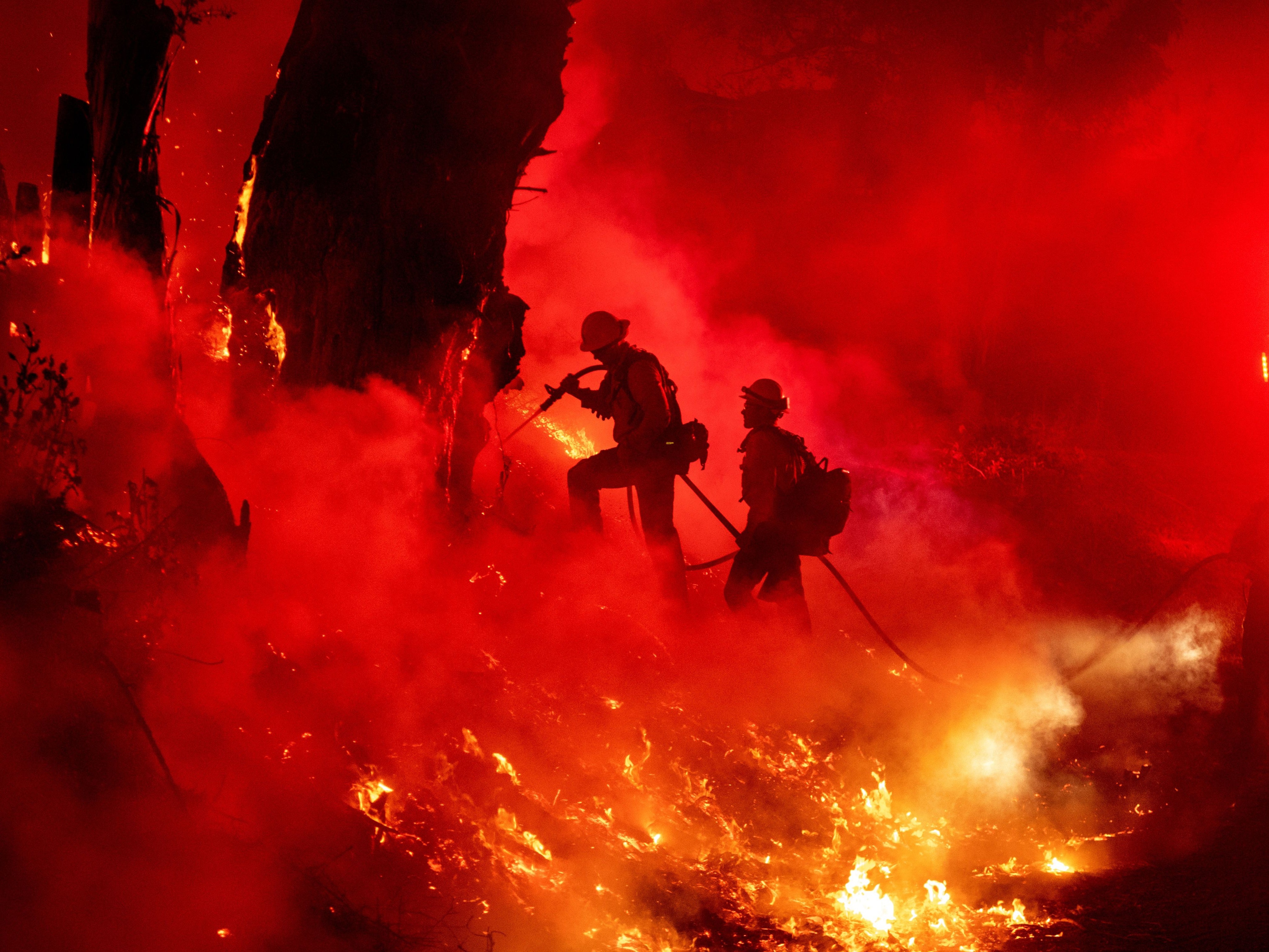
In sizzling heat on the outskirts of San Diego, the new recruits to California’s largest firefighting agency are learning a sombre but essential skill: what to do if they find themselves surrounded by flames with no way out.
Crews can have just seconds to deploy fire shelters – resembling oversized, silver sleeping bags – then lie down and cover themselves before burying their faces into the earth. For about a minute, these shelters can shield them from a blaze reaching more than 1,000C.
“It’s the last line of defence if you’re impinged by fire and cannot get to a safety zone,” Captain Frank LoCoco tells The Independent. “It’s the final option if you cannot get out.”
With each passing year, California’s firefighters face an onslaught of ever more extreme wildfires – and this last resort is becoming increasingly necessary. Last September, 14 firefighters deployed their shelters after being overtaken by flames on Big Sur during the North Complex fire that burned more than 300,000 acres and killed 16 people. The firefighters suffered burns and smoke inhalation, with some needing hospital treatment, but all survived.
Follow heatwave 2021 – live: Northwest temperatures soar towards 50C as wildfires rage
President Biden has acknowledged that more resources must be made available to give support those on the wildfire frontline. Pledging to “act now and act fast”, he has committed to hiring more federal firefighters — and immediately raised their pay — and reiterated the importance of a year-round workforce to combat the growing threat.“
Because of climate change, wildland firefighting is no longer a seasonal endeavour,” the White House said in a statement. “With fire seasons turning into fire years, it is imperative to have a year-round workforce that is available to respond at any time, that is supported and equitably compensated and is available to undertake preventive actions.”
In 2020, California, Oregon and Colorado saw fires on a level never seen before, and the pace of the spread is now even worse. California had its first recorded “gigafire” – the August Complex – which burned through 1 million acres along the Pacific coastline. Overall, 4.3 million acres and 10,000 buildings in California were destroyed, killing 33 – including four firefighters. The National Weather Service issued what’s believed to have been the first ever warning for “fire tornados” – a phenomenon caused by intense heat from flames pushing hot air upwards – for an area near Loyalton, northeastern California.
Funded by our Supporter Programme, The Independent travelled the length of California as the state braced for even more destruction, speaking to those whose lives have been ruined by wildfires – and the people preparing to face this inevitable disaster head-on.
‘We haven’t had half the rain we’re supposed to get’
California has always burned. But, since 1970, the scale of destruction has hugely accelerated. The amount of land covered by the fires has increased fivefold, while wildfire season itself is lasting longer too, stretching on for at least two additional months.
The larger, more intense fires are being fuelled by extreme heat and drought. These conditions are linked to the climate crisis, caused largely by greenhouse gas emissions from decades of burning fossil fuels.
In California, average temperatures have risen around 1C in the past century. Since records began in the 1880s, the hottest years have been the past seven – 2020 was highest, joint with 2016.
This month, before summer even began, a “heat dome” formed over the desert in the southwest, sending temperatures to around 100F (37.8C). Fifty million Americans were placed under a dangerous heat warning, and temperature records were broken across states.
At the same time, California’s rainfall has become less frequent in autumn and spring, while winter storms have become more volatile. California is historically prone to long periods of drought, but these are expected to increase with global heating and less reliable rainfall. As the state heats up further, moisture evaporates from the vegetation and the soil, leaving it primed for burning.
The Sierra Nevada snowpack, which supplies California with water via a network of aqueducts, has become smaller with each decade. In 2021, the snowpack melted two months earlier than expected. A “megadrought” has reached its worst point in 20 years and is expected to persist through September, leaving California’s reservoirs 50 per cent lower than usual and states of emergency in 41 of 58 counties.
One stress point is Lake Oroville in northern California. The lake is currently at about 37 per cent capacity, a worryingly low level for a water resource that helps irrigate 25 per cent of all US crops and powers major hydroelectric plants.
Tony Davis, manager at Lake Oroville’s marina, which saw boats being removed by the dozen last month, calls the impact of the climate crisis “pretty undeniable”.
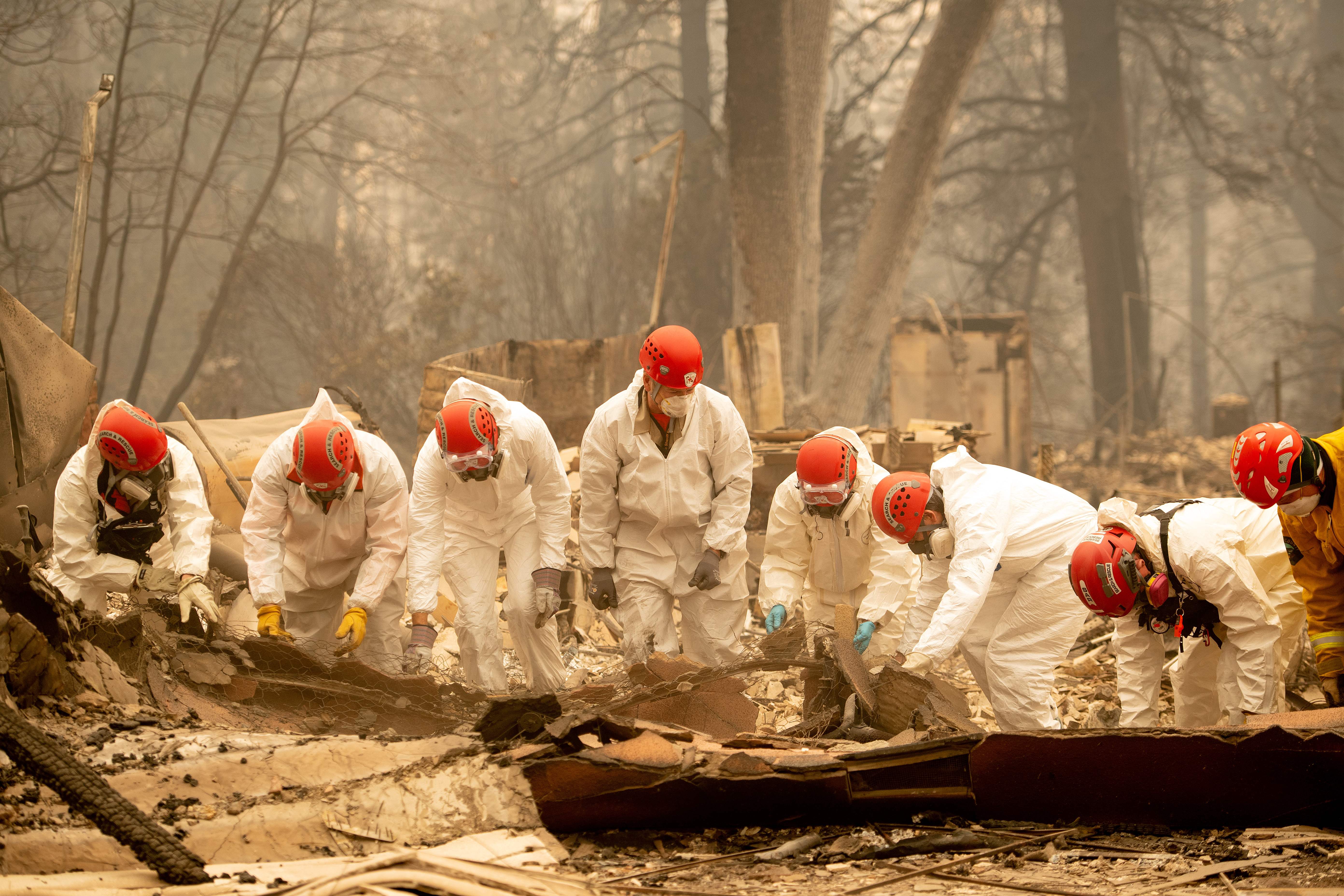
“We haven’t had half the rain we’re supposed to get, and half the snowpack. It makes it really hard when we don’t have water,” he tells The Independent.
On top of the drought, add to the mix the Santa Ana winds in southern California – dry, powerful gusts which can reach up to 70mph in autumn when the fire risk is highest, dancing embers across treetops and fanning flames down mountainsides. In the north, the Diablo winds create similarly dangerous conditions.
To really understand what has driven California’s mammoth wildfires requires a look backwards. Indigenous people across the world, including tribes in California, have for millennia used deliberate, controlled fires to regenerate land, prevent overgrowth, and support the lifecycles of species.
But for more than 100 years, the US government instead followed a path of fire suppression to protect timber supplies and communities. Federal policy ignored the vital ecological role that “good” fire has played in North American forests for thousands of years. And so the forest floors became carpeted with vegetation, waiting for a spark.
‘It’s too traumatising, every time the wind blows’
All but three of California’s 20 largest recorded fires have occurred in the last 20 years. Six took place in 2020. The deadliest of them all was Camp Fire in 2018, which killed 85 people and destroyed 95 per cent of the town of Paradise in northern California.
“My wife and I became separated, we lost cell phone communication early on. We sat in gridlocked traffic with flames on either side for four or five hours,” Woody Culleton, whose family barely escaped, tells The Independent.
“The whole town was catching on fire. At 9am, it was like midnight because the smoke was so black. Embers were blowing across [the road]. It was just frightening.
To find out what other people are saying and join the conversation, scroll down for the comments section or click here for our most commented-on articles
“Initially we were in shock. We lost our home and our stuff. But it’s really about the people, routines and community. That’s the greatest thing that we lost. The fire made me realise how absolutely fragile life is.”
That wildfire was ignited by a utility provider, Pacific Gas and Electric, which had failed to maintain its faulty electrical grid despite the surrounding area being heavily forested and prone to high temperatures and strong winds. While the blame for starting that fire lies squarely with PG&E, the role of the climate crisis on its spread did not go unnoticed.
“Firefighters are living climate change, it’s staring them in the face every day,” Paradise firefighter John Singler said in Rebuilding Paradise, a documentary made following the disaster. He described the conditions in the run-up to Camp Fire as “a perfect storm”.
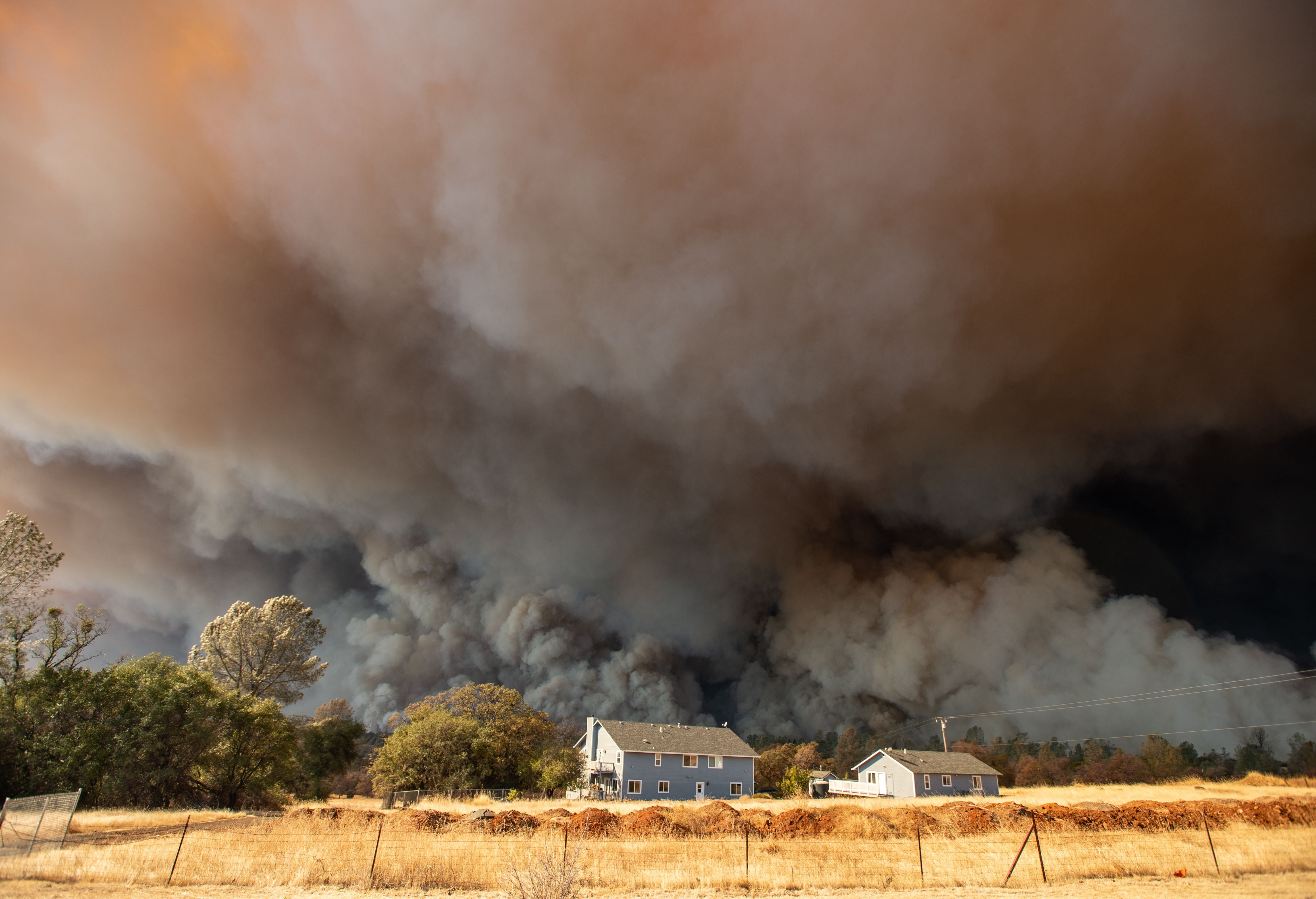
Last year, signs of another monster fire sent panic through the town once more, and residents fled. The devastating Bear Fire did not reach the town, but struck about 40 miles away in the towns of Berry Creek and Feather Falls, killing three people.
The terror of wildfire leaves communities traumatised. Paradise has shrunk from a town of around 26,000 people to 6,000 – in part because rebuilding efforts have been hampered by red tape, the pandemic, and expensive building supplies, but also because, for many, it has been impossible to return.
“I know friends that have not been back to town since the day of the fire. It’s too traumatising, every time the wind blows. Many of us don’t sleep hardly at all any more,” Culleton says.
Prolonged wildfire seasons also bring health concerns. Fires create pollution in the form of tiny particles suspended in the air. These particles, no larger than one-third of the diameter of a hair follicle, can lodge deep in the lungs, causing asthma attacks, heart attacks and strokes, according to the American Lung Association. Studies of children in California found that those who breathed the smoky air during wildfires experienced more coughing, wheezing, bronchitis and colds. Doctors have warned that an hour exposed to wildfire smoke is equivalent to 60 minutes continuously smoking cigarettes.
Air pollution is not just a problem around the fires themselves: satellite data last year revealed that wildfire smoke from the West Coast had spread to eastern Canada, and went as far as the UK and other parts of northern Europe.
Read more special reports from our Supporter Programme
Then there is the environmental cost. The California wildfires in 2020 spewed more than 91 million metric tonnes of carbon dioxide into the atmosphere, the Global Fire Emissions Database reported. That amounted to about 25 per cent more than California’s annual emissions from fossil fuels.
This year looks set to see another prolonged fire season. Up to this week, 3,539 fires have been reported in California, compared with 2,875 last year over the same period. The number of acres burned has jumped 58 per cent year on year.
As more fires ignite and the demand for firefighters increases, the US National Interagency Fire Centre last week raised the national preparedness to level four on its scale, on which the maximum is five. It’s the fourth time in the last 20 years that it has hit that level in June. Around 9,000 firefighters are already on the ground, battling blazes.
‘Playing by a whole new set of rules’
“It’s a new paradigm,” says Captain Eric Just, from Cal Fire’s forestry unit in San Diego. “There are signs of another really challenging fire season and everyone right now is training up, getting ready.”
San Diego is employing a further 300 people at the “Firefighter 1” level of proficiency – a seasonal role that typically starts in late spring and lasts for as long as the major wildfires do. The US fights wildfires using a network of state fire departments, such as Cal Fire, and local and federal agencies.
In training, a stack of shipping containers is used to recreate the conditions of a burning building. Using the carcass of a school bus, recruits learn how to perform extrication with power tools. Fire crews must also be skilled in how to handle, clamp and extend an engine hose line at speed, pull colleagues and themselves through tight, awkward spaces, and perform emergency medical interventions.
“It’s continuous education and training to stay sharp. Adaptation is paramount,” says Captain LoCoco.

In March, California governor Gavin Newsom announced emergency authorisation of $81m for an additional 1,400 firefighters in the California Department of Forestry and Fire Protection (the state agency Cal Fire’s official title) to ramp up its wildfire response.
California is expected to have the largest firefighting force ever, heading into peak fire season. “We aren’t just waiting for the next crisis to hit – this funding will support our heroic firefighters to save lives as they work to prevent and tackle destructive wildfires,” the governor said.
The state is also racing against the clock to cull heavy “fuel loads”, firefighter lingo for the dried-out vegetation across the state.
In the past 30 years, millions of Californians have moved further out of developed areas into what’s known as the wildland urban interface (WUI) zone, due to the dwindling housing and exorbitant property prices spurred by the Silicon Valley tech boom. The WUI (pronounced “woo-ee”) is land where homes butt up against forests and grassland, making them more susceptible to fire.
To find out how to sign up to our full range of free newsletters click here
in 1964, when the Hanly Fire struck Sonoma County, at the heart of California wine country, it destroyed about 100 homes. The 2017 Tubbs Fire blazed across nearly the same footprint in a fraction of the time, razing 5,636 structures and killing 22 people.
While Governor Newsom has also called for an unheard-of $2bn for wildfire preparedness, on the ground crews are already hard at work.
Captain Just’s unit maintains around 25 “fuel breaks” – continuous gaps in vegetation to ideally prevent fire or, at least, slow it down. Cal Fire works closely with Fire Safe Councils (FSCs), a network of about 140 community-led groups that minimise threats in neighbourhoods using techniques such as fuel breaks.
Steve Kerrin is president of Deer Springs FSC, which undertakes projects over a 47 sq m area in San Diego’s inland North County. It includes the community of Hidden Meadows, a neighbourhood of about 1,800 properties dotted across canyons on the WUI. Three years ago, the council received a state fire prevention grant to clear a five-mile fuel break below people’s homes.
“In addition to protecting the immediate residents, this could also be a path for a fire to progress into [the cities of] Escondido, San Marcos and Vista,” Mr Kerrin says.
“Fires seem to be playing by a whole new set of rules now.”
Fuel breaks can make a big difference. During the 2017 Creek Fire near Los Angeles, only five out of 1,400 homes within the fire perimeter burned, thanks to a well-placed fuel break, according to ecologists.
California and the US Forest Service have agreed to ramp up the treatment of forests and woodlands to 1 million acres by 2025, but still have a long way to go to reach this goal.
While mitigation is a perennial process, California also has to tackle blazes head-on. Cal Fire already has the largest firefighting air force in the world, with about 60 planes, air tankers and helicopters spread across dozens of bases, but additional aircraft are expected in the next few years.
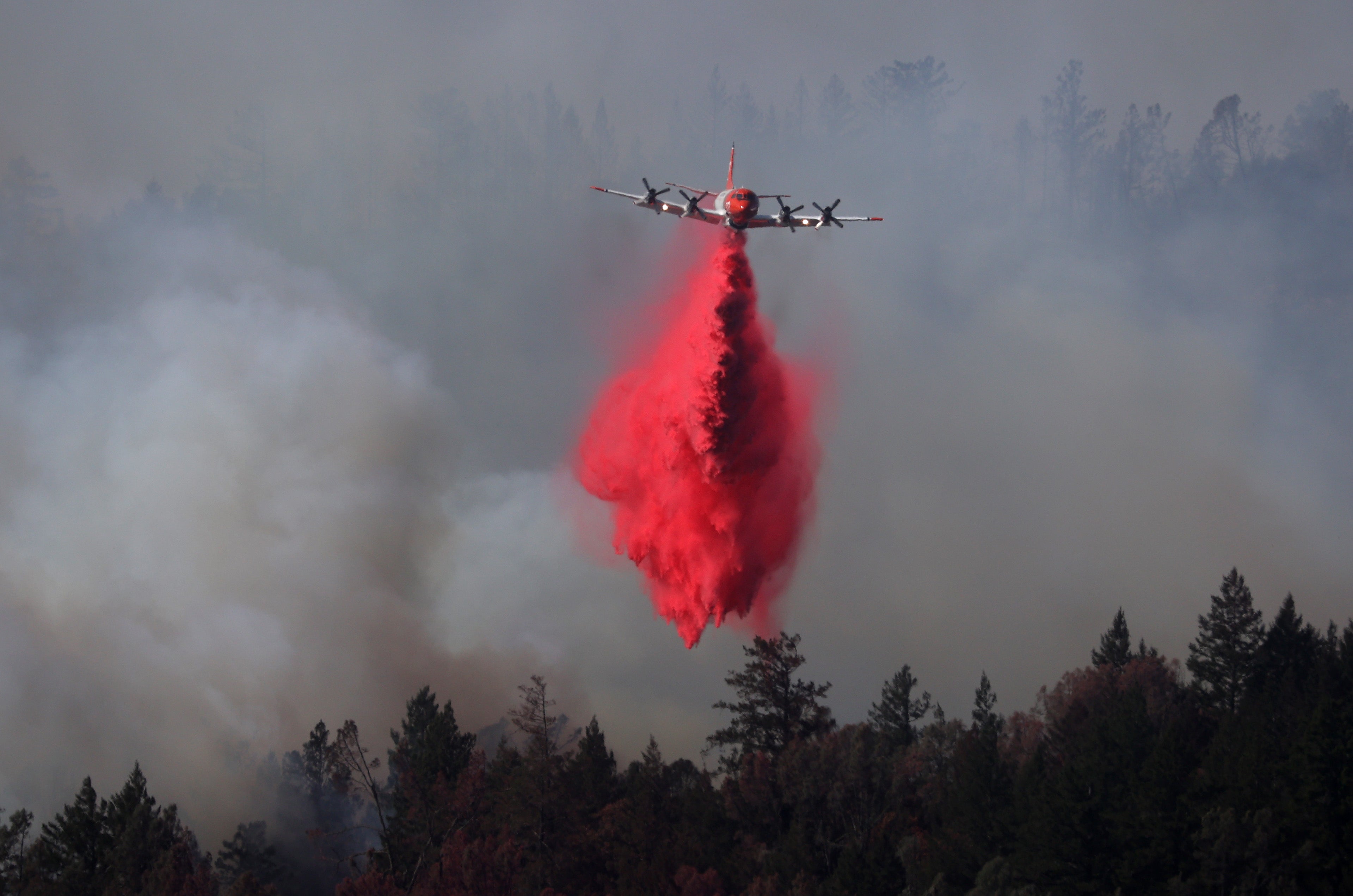
Battalion chief Nick Brown oversees the aviation program from a base in Ramona. He says that, while the aviation fleet’s priority is to “box in the fire” when it covers 10 acres or less, he also acts as “eyes in the sky” for crews on the ground.
“Depending on the topography at ground level you might be unable to see past ridge lines, assess the fire’s acreage, or see if it’s burning heavier on one flank or the other,” Captain LoCoco explains. “[Aviation crews] give us a pretty good painting from above and suggest augments to response, whether adding more engines and/or more aircraft. It’s a very integral position.”
Among the fleet are S-2T airtankers – anti-submarine warfare planes from the navy that have been stripped of machine gun turrets, armour and ejection seats, then loaded with 1,200 gallons of fire retardant for tackling raging wildland fires.
The reddish-pink waves of retardant don’t extinguish wildfires, but they buy time for crews on the ground. Captain Nick Clement, who leads a helicopter crew at a base in El Cajon, recalls seeing trees burst into flames during missions in northern California last year.
“I remember thinking how timber is not supposed to burn like that,” Captain Clements says. “It wasn’t even a wind-driven fire. It was just fuel loads were so dry and there was so much of it.
“Flying up and down the state, it’s all brown, and not in the desert [but] on the mountain ranges.”
‘Everybody has a trigger’
As the ferocity of wildfire season grows by the year, so too does the impact on the firefighters themselves. With the danger, the mental and physical toll increases as well, while longer seasons mean less and less time to recover.
“Everybody’s got a breaking point,” notes Captain Clement.
Captain LoCoco adds: “We all worked 45-day stretches last year while the state burned [and] have spent 48 hours straight on a fire waiting for resources. The biggest challenge for most is disengaging, especially during fire season. We’re always in work mode, and all have pride in what we do, but it’s hard. Your family has to be on board with a job like this.”
He says that the fire service has vastly improved its mental health support in the last few decades, with counsellors “a phone call away”. Following traumatic events, reviews and debriefs are commonplace.
“We see hundreds of times more death and destruction than the average person, and you still have to go to the next call,” he says. “Everybody has a trigger. For me, and for anybody I know, it’s any child-related fatality. At the same time, you still have a job to do.”
If last year’s mammoth blazes laid bare how stretched firefighting ranks had become, they also revealed how dismally some firefighters were being compensated for work that is increasingly perilous, more physically demanding, and lasts for many more weeks.
President Joe Biden last week expressed shock at the $13 hourly wage paid to many federal firefighters, calling it a “ridiculously low salary” and promising to rectify it while he is in office.
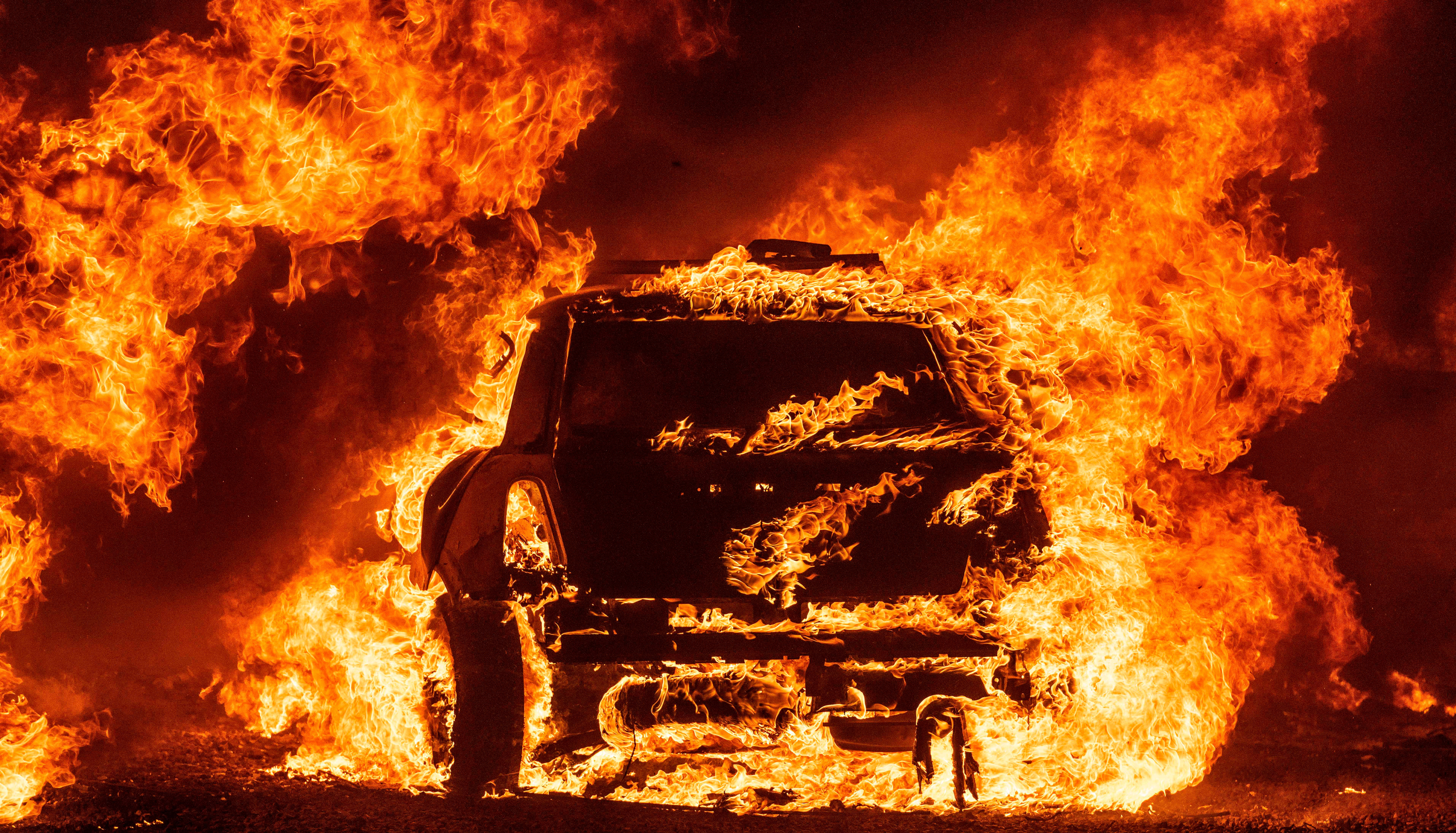
Officials at the National Interagency Fire Centre recently said they face a potential shortage of firefighters in 2021 because the starting salary doesn’t cut it.
While the 2020 California wildfire season was compounded by the constraints and anxiety of rising Covid-19 rates, it also meant a decline in prison inmate firefighters, as outbreaks disrupted training programmes that the state had relied on for decades as a primary line of defence.
These firefighters are typically “hand crews” doing precarious work with chainsaws and tools to establish crucial firelines around communities. They are also integral to the gruelling clean-up operation once a fire has been extinguished.
Cal Fire director Thom Porter said in April that he was concerned about the wildfire readiness of the agency. The number of prison crews available has dropped from 190 to fewer than 70. “The operational concerns that I have are really in boots on the ground,” he said.
At one point last September, more than 30,000 firefighters were on the ground in western states. But so many blazes were burning at the same time, agencies scrambled to shift resources from place to place and weren’t always able to send help where it was needed.
Crews were drafted in from around the US, while countries including Mexico, Israel and Australia sent firefighters to help.
Those in specialised positions, such as aviation crews, are in particularly high demand during peak season.
“The firefighters just kept going and going,” Captain Clements says. “[I was] passing people at Sacramento airport and finding out what fires they were going to.
“As soon as one fire [is over], it’s on to the next one.”

Bookmark popover
Removed from bookmarks